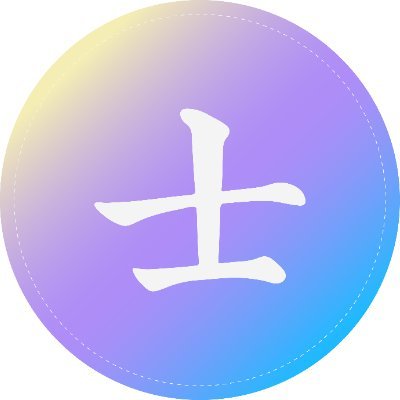Pris för Cronos
i EUR

Om Cronos

Friskrivningsklausul
OKX tillhandahåller inga rekommendationer om investeringar eller tillgångar. Du bör noga överväga om handel eller innehav av digitala tillgångar är lämpligt för dig, med tanke på din ekonomiska situation. Vänligen rådfråga en juridisk-/skatte-/investeringsrådgivare för frågor om just dina specifika omständigheter. För mer information, vänligen se våra Användarvillkor och Riskvarning. Genom att använda tredjepartswebbplatsen (”third-party website/TPW”) godkänner du att all användning av TPW kommer att omfattas av och regleras av villkoren i TPW. Om inte annat uttryckligen anges skriftligen är OKX och dess dotterbolag ( OKX ) inte på något sätt associerade med ägaren eller operatören av TPW. Du samtycker till att OKX inte är ansvarigt eller skyldigt för någon förlust, skada eller andra konsekvenser som uppstår på grund av din användning av TPW. Vänligen observera om att användning av en TPW kan resultera i förlust eller minskning av dina tillgångar. Produkten kanske inte är tillgänglig i alla jurisdiktioner.
Prisresultat för Cronos
Cronos på sociala medier
Guider

Skapa ett kostnadsfritt OKX-konto.
Finansiera ditt konto.
Välj din krypto.
Vanliga frågor för Cronos
Cronos-blockkedjan är populär bland utvecklare för att bygga mycket skalbara applikationer, tjänster och produkter som kommunicerar med andra blockkedjor. Cronos är väl lämpad för att utveckla DeFi-applikationer och blockkedjespel.
CRO är Cronos blockkedjans native verktygstoken och styrningstoken. Den används för att betala gasavgifter när Cronos-nätverkstransaktioner slutförs. Dessutom kan CRO rösta på Cronos blockkedjestyrningsförslag och låsa upp olika handelsgebyrnivåer på den centraliserade börsen Crypto.com.
Köp enkelt CRO-tokens på OKX-kryptovalutaplattformen. Tillgängliga handelspar i OKX spothandelsterminal inkluderar CRO/USDT, CRO/USDCoch OKT/BTC.
Du kan också köpa CRO med över 99 fiatvalutor genom att välja alternativet "Expressköp" option. Andra populära kryptotoken, såsom Bitcoin (BTC), Ethereum (ETH), Tether (USDT)och USD Coin (USDC), är också tillgängliga.
Byt dina befintliga kryptovalutor, inklusive XRP (XRP), Cardano (ADA), Solana (SOL)och Chainlink (Link), för CRO med noll avgifter och ingen prisförskjutning genom att använda OKX Convert.
För att se uppskattade realtids konverteringspriser mellan fiatvalutor, till exempel USD, EUR, GBP och andra, till CRO, besök OKX:s kryptokonverteringsrekker. OKX:s kryptobörs med hög likviditet säkerställer de bästa priserna för dina kryptoköp.
Ta en närmare titt på Cronos
Cronos är en blockkedja som lanserades i november 2021 av kryptovalutabörsen krypto.com. Det är en Ethereum-kompatibel blockkedja byggd med Cosmos Software Development Kit (SDK), ett ramverk med öppen källkod för skapad bevis på staking (PoS) och behörighetsbevis (PoA) blockkedja.
Detta gör det möjligt för Cronos att vara kompatibel med Ethereum och Cosmos blockkedja, vilket gör det enkelt för utvecklare och användare av Ethereum och Cosmos att migrera sina projekt eller tillgång till Cronos och vice versa. Dessutom använder sig Cronos av kommunikationsprotokoll mellan blockkedjor (IBC), som gör det möjligt att kommunicera med andra blockkedjor som använder samma protokoll.
Cronos byggdes för att vara skalbar och interoperabel utan att offra användbarheten. Man avser även att kommunicera med andra blockkedjor och möjliggöra för användare att överför tillgång mellan Cronos och andra blockkedjor i realtid. Med andra ord kan en Cronos-kompatibel blockkedjaanvändare, som Ethereum, överför token och andra tillgångar, till exempel non-fungible token (NFT), från Ethereum till Cronos. De kan också använda sin Cronos-token på Ethereum.
Cronos native ERC-20 token, CRO, krävs för nätverkstransaktion. Det är också nätverkets styrningstoken och kan användas för att rösta om viktiga förslag som kommer att forma Cronos terminer. Vidare kan innehav specifikt belopp av CRO token kvalificera handlare för olika avgiftsnivåer vid handel på krypto.com.
CRO pris och tokenomics
Cronos har ett maximalt cirkulerande utbud på 30 miljarder CRO-token. Alla Cronos-token som någonsin kommer att vara i omlopp skapades i samband med lanseringen av Cronos blockkedja. Detta innebär att inga nya Cronos-token skapas och att inga fler kan brytas. I skrivande stund finns det för närvarande 25 miljarder CRO-token i omlopp. Detta motsvarar cirka 83 % av det totala utbudet.
Medan det totala utbudet av CRO-token ursprungligen var tänkt att vara 100 miljarder token, genomförde Cronos-teamet en av de största tokenbränningarna i blockkedjans historia inför lanseringen av Cronos huvudnät. I ett försök att ytterligare decentralisera Cronos-blockkedjan brändes 59,6 miljarder CRO-token den 22 februari 2021. Dessutom låstes ytterligare 10,4 miljarder CRO-token in i ett månatlig vestingkontrakt. När dessa token släpps kommer de att brännas automatiskt.
Dessa ihållande tokenbränningar syftade till att ta itu med centraliserings- och utbudsproblem. CRO-tokenbränningen förde upp det cirkulerande utbudet från bara 24 % till över 80 %, vilket avsevärt spädde ut tokenutbudet och allokeringen. Detta hjälper till att decentralisera CRO-token och minska utbudet. Denna nyfunna brist på token orsakade en ökning av CRO-priset och förnyade tokenens efterfrågan.
Om grundarna
Cronos nätverk är en produkt av krypto.com, en centraliserad börs som verkar under Monaco Technologies GmbH, som ursprungligen grundades 2016 av Kris Marszalek, Rafael Melo, Gary eller och Bobby Bao. Teamet har många branscherfarenheter, med en global bakgrund från Europa och Kina. Innan han grundade krypto.com hade Marszalek grundat ett e-handelsföretag och ett design- och tillverkningsföretag med fokus på konsumentelektronik><.
eller kom från en bakgrund inom teknik och datavetenskap, med över nio års erfarenhet som full-Stacks mjukvaruingenjör. Samtidigt tar Melo och Bao med sig erfarenhet från traditionella finans- och investeringsbranscher. Tillsammans lanserade det väl avvägda teamet krypto.com, vilket ledde till vidareutvecklingen av blockkedjan Cronos.
Även om Cronos blockkedja fortfarande är relativt ung, har den fått ett massivt genomslag sedan lanseringen. Enligt Cronos, VD Ken Timsit, hanterade Cronos 12 miljoner transaktioner och hade nästan 2 miljarder dollar låsta i olika tjänster och protokoll över hela blockkedjan, mindre än tre månader efter lanseringen><.
ESG-upplysning







